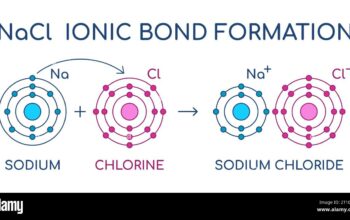In the grand tapestry of the cosmos, matter manifests in various states, each distinct in its properties and interactions. The traditional triad of solid, liquid, and gas has long been familiar territory for scientists and laypersons alike. However, looming just beyond this conventional understanding lies the fourth state of matter: plasma. This ephemeral state embodies a world of energy and interconnected particles, a dance of subatomic entities that defies the simplistic categorizations of its predecessors. To delve into the intricacies of plasma is to uncover the very essence of the universe itself.
The definition of plasma wades through the realms of both physics and chemistry, revealing itself as an ionized gas in which a certain proportion of electrons are no longer bound to their atomic nuclei. In essence, plasma consists of positively charged ions and free electrons coalescing into a medium rife with intricate behaviors. Here, chaos reigns—particles swirl with immense kinetic energy, giving rise to stunning visual phenomena such as the auroras, solar flares, and lightning strikes. These occurrences are not mere anomalies; they are manifestations of the underlying principles that govern plasma as a state of matter.
Historically, the conceptualization of plasma emerged from the pioneering work of researchers in the early 20th century. Irène Joliot-Curie’s contributions to the field of nuclear physics provided fertile ground for the subsequent explorations of ionized gases. However, it was the groundbreaking work of Irving Langmuir in the 1920s that catalyzed the formal recognition of plasma as the fourth state of matter. His investigations into electric discharges in gases revealed the myriad behaviors exhibited by ionized particles and established the framework for future plasma research.
One may liken plasma to a celestial symphony where each note contributes to the overall harmony. The charged particles oscillate rhythmically, influenced by electromagnetic fields, creating a dynamic interplay that transcends ordinary boundaries. Plasma takes many forms, ranging from the ubiquitous stars that populate our universe to the man-made displays of neon lights. Each variation narrates a unique story, illustrating the versatility and omnipresence of this enigmatic state.
One of the hallmarks of plasma is its responsiveness to electric and magnetic fields. This characteristic enables the manipulation of plasma in various technological applications. For instance, plasmas play an integral role in plasma televisions, where electrons collide with phosphor-coated screens to produce vivid images. Moreover, they are instrumental in fusion research, aiming to replicate the processes that power the sun, which could potentially yield a clean and virtually limitless energy source for humanity. In many respects, plasma is the bridge between theoretical physics and practical innovation.
Additionally, the study of plasma has illuminated several fundamental astrophysical phenomena. The cosmos, instilled with plasma, serves as a crucible for stellar formation and evolution. The interaction of plasma with magnetic fields gives rise to astrophysical jets, while the diffusion of solar plasma into the solar wind shapes the heliosphere. Such interactions provide insight into the underlying mechanisms of cosmic activities, unraveling some of the universe’s most profound mysteries.
However, the significance of plasma extends beyond mere academic interest. Its implications stretch into various fields, including medicine and materials science. In fields such as plasma medicine, ionized gases are used to sterilize surgical instruments and directly treat wounds, promoting rapid healing with minimal damage to surrounding tissue. In material fabrication, plasma can enhance surface properties, enabling the development of impermeable barriers and ultra-durable coatings. This versatility underscores plasma’s unique appeal—a trait becoming increasingly vital in meeting contemporary societal challenges.
Intriguingly, plasma also intersects with the study of dark matter—a mysterious component constituting a significant portion of the universe’s mass-energy content. While dark matter remains elusive, researchers speculate about the potential interactions between plasma and dark matter, possibly unveiling new dimensions of understanding pertaining to the fabric of the cosmos. Herein lies the beauty of plasma: it not only stands as a cornerstone of established sciences but also opens portals to speculative domains where the known and the unknown entwine.
Yet, as with any scientific exploration, challenges persist. The behavior of plasma can be vastly different under varying conditions. Plasma stability and confinement develop complex patterns, often leading to turbulence that can hinder progress in both experimental and applied settings. Researchers continue to grapple with these phenomena, striving for greater understanding and control over plasma systems, reminiscent of the ancient alchemists’ quest for transformation and mastery over the elements. In this respect, plasma embodies the intersection of wonder and rigor, aspiration and reality.
The wondrous world of the fourth state of matter invites us to reconsider our preconceptions about the nature of existence. Plasma epitomizes the delicate balance between order and chaos, resonating through the very fundamental forces that structure our universe. It serves as a testament to the dynamism of matter, illustrating that even in the grand choreography of the cosmos, there remains a realm poised between the tangible and the ethereal. In our quest to explore the universe, plasma stands not merely as a state of matter but as an enduring symbol of curiosity that drives human understanding to new heights.












